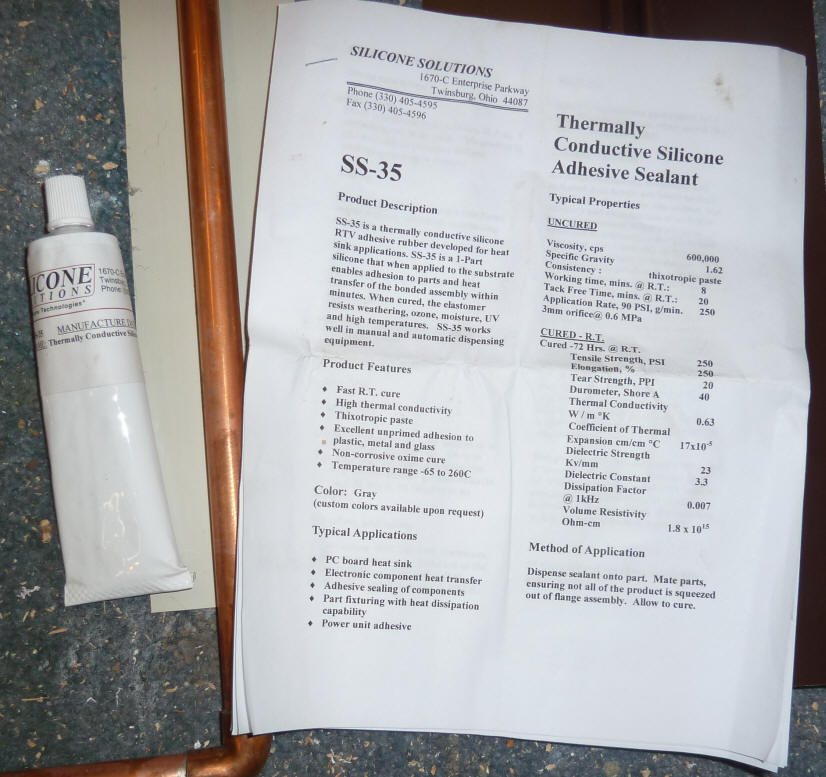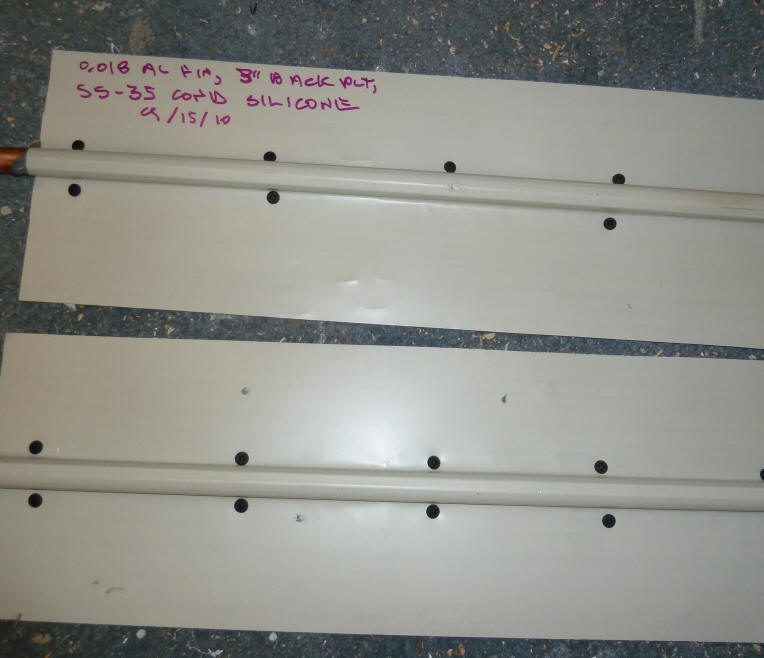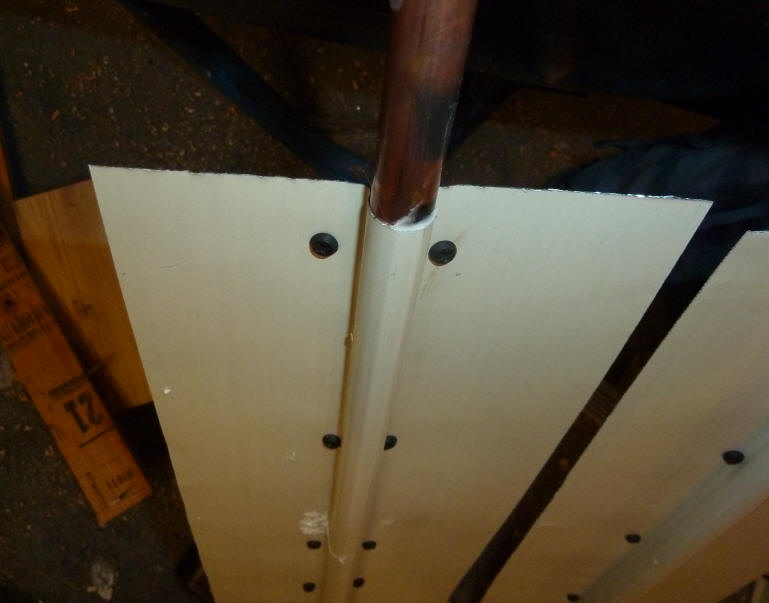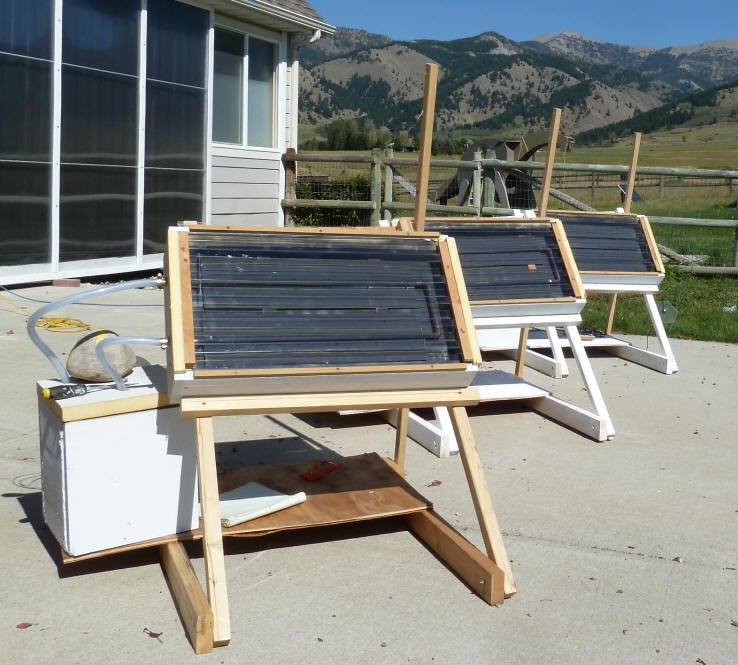
Search
The Renewable Energy site for Do-It-Yourselfers
Solar Collector -- Small Panel Test
-- Conductive Silicone
The conductive silicone I used is made by Silicone Solutions -- this is the
data sheet:

The specification sheet for the high conductivity silicone. The thermal
conductivity is about 3 times greater than regular silicone caulk.

This shows the absorber with the conductive silicone caulk before it was painted
black.

This shows the copper tube to aluminum fin joint with the silicone fill.
The critical thing is to keep the gap paper thin.
It does not show in the picture, but there is a 3 inch wide strip of flat
aluminum just under the tube and aluminum fin. To assemble the fin, a
small bead of the silicone is placed in the fin groove, then the fin is clamped
very tightly onto the copper tube, then while still clamped, the grooved
aluminum fin is screwed to the underlying 3 inch wide flat piece of aluminum.
See
here for details on the assembly...

This shows the 3 collectors each heating its own reservoir.
The two collectors are as identical as I can make them except for the
differences being tested -- in this case one with regular silicone caulk
between fin and tube and the other with conductive silicone caulk between tube
and fin. The third collector is the baseline copper tube soldered to
copper fin collector that is included in all tests.
The water reservoirs are of identical size and construction, and the water
charge is weighted into each of the reservoirs to insure that they start with
equal amounts of water. The temperature of each reservoir is logged, and
the performance of each collector is in direct proportion to the amount it is
able to heat its reservoir during the test.

The plot shows the results for a 3 way side by side by side test of:
1 -Black solid line: A reference collector with copper
risers soldered full length to copper fins.
2 -Red dash line: A collector made with copper risers and
aluminum fins with regular silicone between fin and riser
3- Green long dash line: A collector made with copper
risers and aluminum fins with a conductive silicone between fin and riser
The conductive silicone shows a temperature gain that is 0.5% better than the
regular silicone. This is a pretty small change and may well be just
experimental variation.
So, based on this, I would say that its not worth going to much of any extra
trouble to find a conductive silicone caulk.
Gary May 26, 2011

